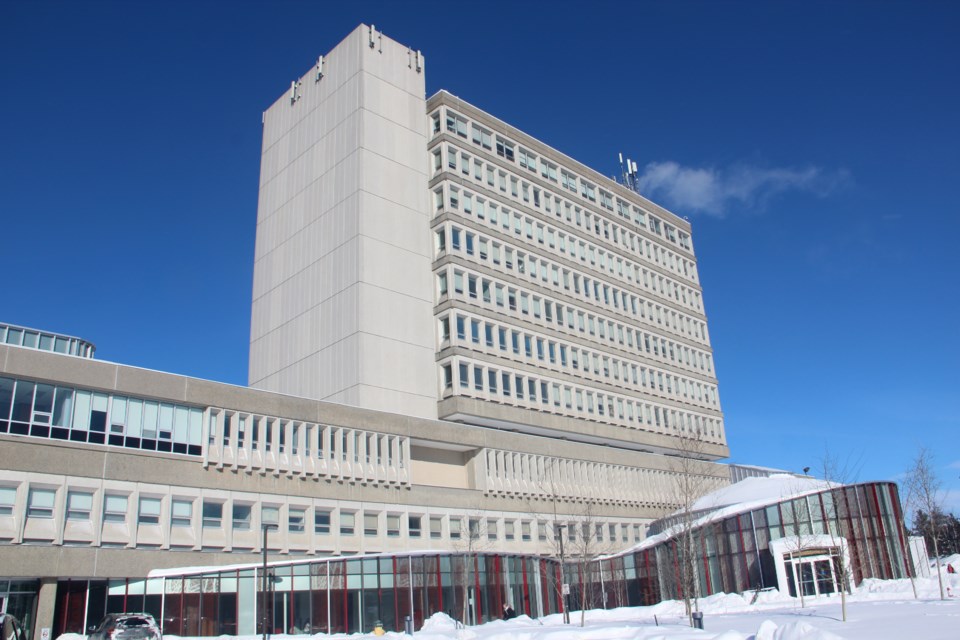After 22 months under creditor protection, Laurentian University has finally exited insolvency restructuring under the Companies’ Creditors Arrangement Act (CCAA).
The university made the announcement Nov. 28.
The process, which Ontario Auditor General Bonnie Lysyk said Laurentian never needed to enter in the first place, included mass layoffs and program cancellations, the severing of ties with federated universities operating on campus (resulting in even more layoffs and program cancellations) and a plan of arrangement that will see LU creditors receive only roughly 14 to 24 per cent of what they’re owed over the next three years.
With Laurentian being the public university in Canada to attempt to restructure its operations using a process designed as a last resort for private companies, the situation has attracted national media attention and resulted in damage to Laurentian’s reputation.
The university exits the CCAA minus both its most recent president, Robert Haché, and provost, Marie-Josée Berger, who departed earlier this month as part of the terms of Laurentian’s plan of arrangement.
Another former Laurentian president, Dominic Giroux, is now the CEO of Sudbury’s hospital, Health Sciences North, but his actions during his time at LU were criticized by Lysyk as contributing to the university’s financial decline.
“While there is much healing and hard work yet to be done, today we emerge stronger with safeguards in place to ensure a sustainable, more transparent and inclusive future,” said Jeff Bangs, chair of Laurentian’s board of governors, in a press release issued Nov. 28.
“Reforming our governance, improving operations and heeding the recommendations of the Auditor General will keep us on track but, most importantly, we must be committed to respecting all of the University’s stakeholders as key decisions about the future are made.”
“We are committed to rebuilding pride in LU and regaining the confidence of our many stakeholders and the Greater Sudbury community,” said Tammy Eger, the university’s interim president, in the press release.
“We’ll do this through our actions in the months and years ahead as we form our strategic plan and continue organizational transformation. Students and parents can feel confident in their decision to choose Laurentian to advance their education.
“The future is bright for Laurentian, we have work ahead to transform our institution, but the path forward is clear. We are inspired to realize the vast potential within our community.”
In a speech to the Greater Sudbury Chamber of Commerce earlier this month, Bangs, who became Laurentian’s board chair in early 2022, said LU has already been through a “lot of hard work,” and the “next phase of hard work is set to begin.”
He said he hopes the upcoming chapter is much brighter, while acknowledging those hurt during the CCAA process.
Bangs said upcoming work for the university include finding a new president and provost for LU, developing a new strategic plan and implementing the terms of the plan of arrangement, which includes selling up to $53.5 million in LU real estate to the province to provide funds for Laurentian’s creditors.
He also said he expects Laurentian will remain under scrutiny for years to come after the CCAA, with Lysyk already having indicated she’s planning follow-up audits after the recent release of her special report on LU.
In a recent interview with Sudbury.com following the release of the auditor general’s report, Bangs said in emerging from the CCAA, there’s now an opportunity for Laurentian to “take back control of its own destiny.”
“As we go through the implementation phase in the coming years, we all know that we're going to be watched by many - the province, the auditor general, the monitor, and we're going have to work with those people,” he said.
“But as we go through this transformation exercise, we will take that control, and we will earn people's confidence.”
In terms of recruitment of students, Bangs said there are a lot of signs are pointing to a better school year in 2023-24, given LU’s exit from the CCAA.
“We've got our people out recruiting this fall for students for the next school year, and we're hoping that we're moving in the right direction,” he said, adding that at this point, the only place to go is up.
Laurentian University Faculty Association (LUFA) president Fabrice Colin also said the university’s exit from the CCAA is good news.
“Because now Laurentian will be able to rebuild and truly make decisions without the provision of the courts,” he said.
Colin said he’s running out of words to describe what the CCAA has been like, but said it has been a “true nightmare” that “should have been avoided.”
He points to the findings of Ontario’s auditor general, who said the CCAA could have been avoided, with one of the tools being triggering the financial exigency clause, which would have required administration to work with LUFA to address Laurentian’s financial situation.
Tom Fenske, president of the Laurentian University Staff Union (LUSU), said with the exit of the CCAA, “the reins will come back to us.”
He said he thinks the university needs to move forward “in a responsible way,” because “all eyes are going to be on us.”
— Sudbury.com




